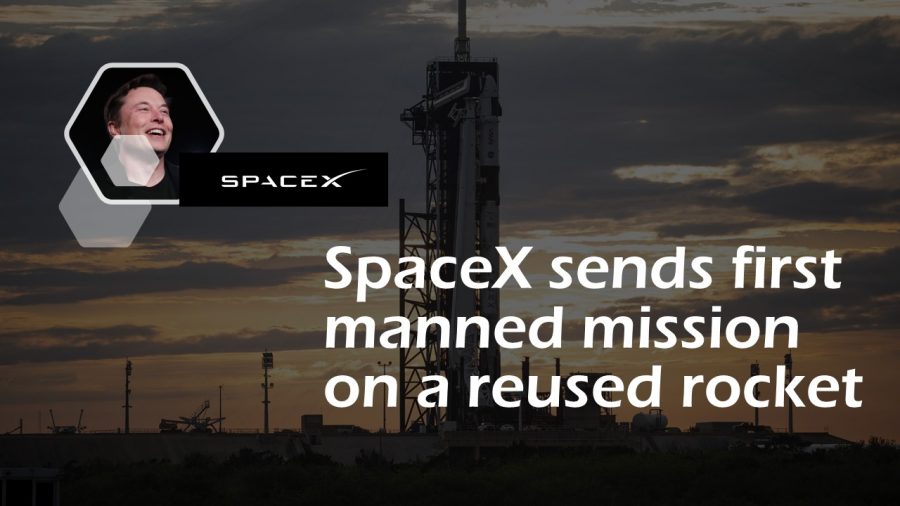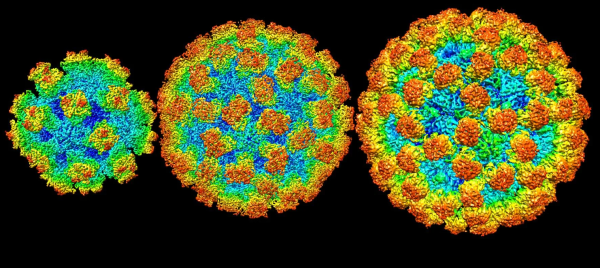SpaceX sends first manned mission on a reused rocket
“I think the reusable technology on the Crew-2 launch is a smart investment by NASA and SpaceX. I can see it benefiting the world in a lot of ways, not only can space travel be possible for average people one day but being able to find resources and room on other planets for colonization could be part of a solution to the ongoing problems on our own planet,” said junior Bryan Casalini. Earth issues including global warming and overconsumption led companies like SpaceX to seek out solutions in space. Although commercial spaceflight and interplanetary colonization sits far outside of people’s paychecks, cheapening spaceflight through reusability also reduces the amount of resources required by rockets and spacecraft.
May 17, 2021
On April 23, 2021, SpaceX launched its Crew-2 mission to the International Space Station(ISS) utilizing reusable Falcon 9 rockets. This launch marks the first time in human history that reusable rockets brought astronauts to space. The mission also expands upon SpaceX’s growing trophy case as its first case of a SpaceX rocket delivering two international partners to space: Akihiko Hoshide of the Japan Aerospace Exploration Agency and Frenchman Thomas Pesquet from the European Space Agency.
The Falcon rocket project began over a decade ago, with SpaceX revealing the Falcon 1’s maiden launch. In 2008, NASA would choose SpaceX as the supplier of booster rockets and spacecraft to resupply the ISS. Later in 2013, SpaceX would become the first commercial company to re-enter a spacecraft from Earth’s orbit with its Falcon 9 booster rockets and Dragon space capsule. Throughout SpaceX’s existence, the company created a path towards civilian-accessible space travel, including the reusable rocket and reusable Dragon spacecraft. Alongside Jeff Bezos’s Blue Origin and Michael Colglazier’s Virgin Galactic, commercial spaceflight companies including SpaceX revolutionized how the world sees space travel.
“Using reusable rockets, the travel to space can become more efficient and cheaper than other types of rocket. This will become one step closer to more people to see space, hopefully even normal citizens,” said senior Jmen Seso.
The Crew-2 launch acts as proof of concept: not only can reusable rockets lower costs of unmanned missions, but they can also lower costs of manned missions, furthering SpaceX and Elon Musk’s goal to colonize Mars and other planets. However, affordable space flight remains a far off aspiration, evidenced by New York businessman Dennis Tito who paid $20 million dollars to fly with Russian cosmonauts to the ISS and stay eight days on the station. On the other hand, Musk revealed that of the total $62 million launch price tag attached to each Falcon 9 booster, reusability saves $46.5 million of that total per reused launch.
“We don’t want to be one of those single planet species, we want to be a multi-planet species,” Musk said.
By comparison, sending out five Crew-2 missions on Falcon 9 booster rockets without reusing them would cost $310 million each. Reusing the rockets saves about $232.5 million each, costing a more affordable $77.5 million each rocket over those five missions. On a large scale, and on interplanetary spacecraft, a 75 percent discount on each reuse really adds up. The entire Apollo lunar program cost the USA $28 billion to land astronauts on the moon between 1960 and 1973, or about $283 billion when adjusted to fit inflation today. About $177 billion of the total inflation-adjusted cost belonged to spacecraft and launch vehicles. Saving 75 percent of that cost would allow four times the lunar launches, a giant stride towards bringing interplanetary travel to civilians.

















